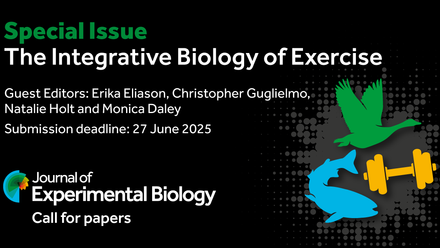Spying Without Seeing: The Tiny Tech of Animal Biologging
Humans are inquisitive creatures. We like to know what other creatures are up to when we’re not watching. Whether it’s through body temperature, blood chemistry, respiration, or even just movement, the miniaturisation of biologging technology allows us to track and monitor the lives of wild animals, both inside and out. But what can these insights tell us about how animals interact with each other and their environment, especially in the face of a changing climate? Let’s find out.
CAN WILDEBEEST HANDLE THE HEAT?
Things are heating up for all life on Earth, but some organisms are less equipped to deal with climatic changes than others. For large terrestrial mammals, even just a small increase in ambient temperature can make surviving and reproducing more difficult. Discovering how these changes will affect mammals in the coming years is important work, and thankfully there are researchers on the case. “In the early 2000s, we realised that climate change, particularly in drylands, was going to severely challenge the ability of mammals to maintain homeostasis,”1 says Andrea Fuller, a professor in physiology at the University of Witwatersrand, South Africa, and director of the Brain Function Research Group. “We needed to know much more about how free-living mammals are able to respond to environmental change.”
At the 2021 SEB Annual Conference, Andrea presented her team’s research into the effects of environmental fluctuations on blue wildebeest (Connochaetes taurinus). She explained that in the face of climate change, large terrestrial mammals such as wildebeest are at particular risk owing to two major risk factors. “Their life history traits will prevent them from adapting genetically at a sufficient pace to keep track with changing environments,” says Andrea, “and habitat fragmentation will preclude them from shifting their distribution range.”
Blue wildebeest being instrumented to record heart rate
Photo credit: Andrea Fuller
Specifically, Andrea and her team wanted to assess how the wildebeest would respond to hotter and drier environments, as are to be expected from our current climate change trajectory. “To obtain this knowledge, we use biologging technology to measure physiological and behavioural responses of wildebeest to changes in their environment,” she explains. “The biologgers record heart rate, body temperature, subcutaneous temperature, activity level, and head position.” Because they could collect data remotely, the biologgers were able to monitor the animals in their natural habitat and away from human observation. “We can only truly learn how animals respond to environmental change through field studies,” says Andrea. “The disadvantage is that it can be invasive and costly, as we have to capture the animals in the first place to attach the devices and some data loggers need to be implanted through surgery.”
Andrea points out that the use of biologgers is often accompanied with unexpected and exciting new insights into the use of research technology, as well as animal physiology and behaviour. “In the case of the wildebeest we could see from body temperature profiles when the males were fighting,” she says. “We could also see what happened when the animals were captured as part of routine game management procedures, and how sporadic rainfall events had immediate effects on the animals’ behaviour and physiology.”
With this study, Andrea and her team revealed that although the effects of climate change will undoubtedly prove to be challenging for blue wildebeest, they do possess a level of innate resilience. “We found that wildebeest do have some physiological and behavioural plasticity that allows them to cope with spatial and temporal variability in food resources and climatic variables,” she explains. “This may allow them to cope, to some extent at least, with the consequences of climate change.”
However, our understanding of mammalian phenotypic plasticity in response to changing environments is still a long way from comprehensive, leaving many questions still be answered. “We also need to consider trophic interactions, including the complex interplay between conspecifics, competitors, and predators,” adds Andrea. “If we wish to accurately predict how mammals will respond to climate change, and how best to act in order to conserve them, we need to really understand their sensitivity and exposure to changes in the environment,2 as well as the extent to which phenotypic plasticity can buffer them against those changes.”
HIGH QUOLLITY ACCELEROMETERY
Tracking cryptic wild animals is one thing, but knowing what they’re actually doing when you can’t see them is a whole other matter… or is it? Thanks to Joshua Gaschk, a researcher of animal biomechanics at the University of the Sunshine Coast, Australia, and the humble accelerometer, a staple of the biomechanist’s toolbox, we now have an idea of the behaviours that male Northern quolls (Dasyurus hallucatus) exhibit when they’re looking for love.
“I have always loved the idea of studying animal behaviour,” says Joshua. “We originally wanted to use accelerometers just to explore the biomechanics of animals, but during this project we realised that we could identify a broad range of fine-scale animal behaviours from the accelerometer output!” The inspiration for Joshua’s mating season behaviour study came from an earlier project, in which they collected behavioural data from cats,3 and then became interested in the idea of comparisons with Australia’s “marsupial cats”, such as Northern quolls. Northern quolls are semelparous, meaning that they have one frantic bout of reproduction in their life before they die, and these quolls take it seriously, spending their last few days and breaths doing nothing but mating.
“When we reached the site to study the quolls, we discovered we had arrived in the middle of breeding season, where the males forgo all sense of survival just to breed with as many females as possible before dying,” he explains. “I suddenly wanted to find out if behavioural differences were involved with the mass die-offs, in which case, we should be able to see different behaviours exhibited by the males and females.”
“We trapped for quolls and attached the accelerometers to them, which was tricky because they are quite feisty for their size,” explains Joshua. “The experiments involved filming the quolls in a trackway performing different behaviours like running, jumping, and foraging, all while they had these accelerometers on.” Accelerometers are most typically used within biomechanics to track the movement of whole animals and sometimes even specific body parts, but Joshua’s study highlights their flexibility in being used for behavioural experiments. “The main benefit of accelerometers for this type of research is the removal of the observer’s influence on the animal,” says Joshua. “The presence of an observer may skew their behaviours, but these accelerometers provide us with the capability to study the natural behaviours of small or cryptic animals that are often hard to observe in the wild.”
Joshua and a Northern quoll trap
Photo credit: Joshua Gaschk
twOn the other hand (or paw, in this case), accelerometers do come with their own set of drawbacks. “Our method of reclaiming the data is a little tricky because we have to keep these devices light, so I had to recatch the quolls and retrieve the devices in order to get any data,” explains Joshua. “I also think understanding the accelerometer traces and processing the output has all been a huge learning experience for me … but that is what PhDs are for, right?”
Joshua and his team found that even though these animals are traditionally nocturnal, breeding males tend to power through the day as well as the night. “We found that males use way more energy and are more active throughout the day, whereas females still find time to catch some sleep,” he says. “The male quolls showed very little sleeping behaviour when they were roaming in the wild, essentially spending the entire breeding season increasing their energy expenditure and reducing their time of recovery until they died.”
For semelparous animals such as the Northern quoll, reproduction comes at great cost and there is a lot of risk associated with their reckless mating-at-all-costs life history. When climate change gets added to the equation, things are only likely to get more difficult. “The increased temperature at a time when the males are already exerting so much more energy would definitely have an effect on breeding males,” concludes Joshua. “Understanding the life history of Northern quolls, specifically around breeding times, is only one step forward in protecting these beautiful Australian animals.”
Northern quoll
Photo credit: Joshua Gaschk
OUT OF THE FRYING PAN(GOLIN)…
Food availability and, ever more increasingly, climate change are two major deciding factors in whether individual animals survive in the wild. Using small and implantable biologgers to keep a close eye on how animals respond, both behaviourally and physiologically, to these factors is a very useful tool for predicting their ability to adapt and survive. “My first big research project involved animal behaviour aspects and indirectly involved physiology, and that was a great combination,“ says Wendy Panaino, a postdoctoral animal physiologist at the University of Witwatersand, South Africa. “I loved the idea that the inner workings of animals were driven by their outside world.”
Many animal species are currently facing a suite of anthropogenic threats such as habitat loss, reduced food availability, and poaching, putting them on the International Union for Conservation of Nature’s Red List of Threatened Species. One such species is Temminck’s pangolin (Smutsia temminckii), which was the focus of Wendy’s SEB 2021 talk and part of her work supported by the Tswalu Foundation. “The overall aim was to understand how pangolins cope with changes in climate and food availability in their current environment so that we could make better predictions about how they might cope with climate change,” she explains.
Wendy tracking pangolins
Photo credit: Wendy Panaino
To achieve this, Wendy and her team used a combination of location trackers and biologgers to keep track of their study animals and monitor their physiology. “We tagged six Temminck’s pangolins with very high frequency tracking transmitters at Tswalu Kalahari Reserve and implanted each pangolin with a miniature temperature-sensitive data logger, which recorded pangolin core body temperature every 5 minutes,” says Wendy. “We also measured the local climate, the availability of ants and termites using pitfall traps, the pangolin diet by analysing scats, and pangolin activity using camera traps and 24-hour body temperature records.”
These small and remote devices allowed Wendy and her team to monitor the secret lives of their pangolins without too much human interference. “Studying a shy, elusive, and nocturnal animal is incredibly challenging, but the use of tracking transmitters to study focal individuals made it possible,” says Wendy. “Being able to track and monitor focal individuals gave us the opportunity to pry into so many details of this elusive animal’s life and gave us insights that we may have missed without the appropriate technology.” However, Wendy acknowledges that, as effective as these tracking transmitters are, they are not without limitations. “One issue is that tracking transmitters are not indestructible and the pangolin environment can often be quite harsh, resulting in broken technology and lost pangolins,” she says. “The challenge is worsened because the body temperature data loggers cannot be downloaded remotely, so if we lose contact with an individual, we lose very valuable body temperature data along with it.”
Once they retrieved the data, Wendy and her team were surprised by what they revealed. “We found that pangolins were more diurnal than we had previously believed,” she says. “They became diurnal in response to food shortages during winter, which was exacerbated following a dry summer.” As well as climate-mediated responses, they also discovered interesting information about their dietary preferences. “They were incredibly fussy eaters, preying predominantly on only ants and termites,” she explains. “When food availability was low during winter, pangolins shifted their diet slightly, but this did not prevent low energy intake during this time.”
Overall, Wendy’s results suggest that if prey populations continue to decline and temperatures continue to rise, then pangolins will likely experience more physiological stress, making them even more vulnerable to other threats. “Globally, pangolins are threatened by the illegal wildlife trade, habitat destruction, road mortality, and electrocution by electrified fences,” concludes Wendy, “but still very little attention is given to the potential impacts of climate change on pangolins.”
A FIT-‘PIT’ FOR EXERCISING BIRDS
From a genetic standpoint, organisms are only as successful as their ability to pass on their genetic information to the next generation. For many animals, that next generation relies solely on their parents’ ability to provide food until they can acquire it themselves, meaning that any reduction in parental investment could have devastating effects on the survival of individuals. Gary Burness, professor of animal physiology at Trent University, Ontario, Canada, has been investigating how changes in environmental constraints can affect parental behaviour in wild animals.
“I have been thinking about the interface between animal physiology and ecology since my PhD in the 1990,” says Gary. “At that time, I was interested in why some birds were able to work harder than other birds within the same population, leading me to investigate the physiological correlates of exercise performance.” At SEB 2021, Gary presented the work of his team assessing how the risk of overheating may limit the exercise performance of tree swallows (Tachycineta bicolor), which was explored primarily by Gary’s PhD student at the time, Simon Tapper.4, 5 “You exercise only so hard until you start to overheat and then you slow down,” Gary explains. “Tree swallows are aerial insectivores and forage for food by flying around, making multiple trips back and forth to their nests, so exercise is a big part of their parental role.”
Gary and his team figured out a way of artificially creating swallows with a higher tolerance for heat by trimming their belly feathers. “We trimmed the belly feathers of the female swallows to improve their ability to dissipate heat,” he explains. “We also inserted PIT [passive integrated transponders] tags to help us monitor their activity.” PIT tags are small insertable capsules that contain radio transmitters broadcasting unique signals for each tag, allowing individuals to be identified. Each of the swallows’ nest boxes contained a PIT tag reader that counted every time the parental swallow visited the box, giving Gary and his team an estimate of the amount of exercise the birds were getting as well as the level of parental investment the chicks were receiving. “We also implanted thermal PIT tags, which measured subcutaneous body temperature,” Gary adds. “This way we could see if there was a relationship between nest-box visitation rate, an individual’s body temperature, and the effect of trimmed belly feathers.”
Gary explains that the major benefit of thermal PIT tags is that they allow measurements of body temperature without having to handle the birds. “It would have been possible to get body temperature without these thermal PIT tags, but this would have required us to capture individuals as they entered their nest box and then measure temperature using a small probe while they were held in the hand,” he says. “This would likely result in some sort of handling stress, which might impact an individual’s temperature.”
Two tree swallows
Photo credit: Raul Suarez
In a world with rising global temperatures and more frequent extreme weather events, the ability to keep functioning under thermal stress will become even more important for reproduction and survival, as Gary and his team discovered. “We found that individuals that were able to dissipate heat via feather trimming could work harder at the highest temperatures, suggesting that working capacity may be limited by overheating,” he explains. “Although gradual climatic warming may not have a huge effect on individual birds, more frequent temperature spikes may prevent adults from maintaining high foraging rates on very hot days and reduce their parental investment.”
Thanks to the nature of experimental research, Gary’s studies have provided him with just as many new questions as answers—some that he would like to continue researching in the future. “We tend to think of there being little inter-individual variation in body temperature, but we actually found that individual tree swallows often differed from each other by a least 1–2 °C,” says Gary. “Why do these individuals differ in their body temperature, and does it mean than some individuals are at fundamentally greater risk of overheating than others? This would be certainly worth exploring.”
References
1. Fuller A, Moss DG, Skinner JD, et al. Brain, abdominal and arterial blood temperatures of free-ranging eland in their natural habitat. Pflugers Archiv 1999; 438: 671–680.
2. Fuller A, Mitchell D, Maloney SK, et al. How dryland mammals will respond to climate change: the effects of body size, heat load and a lack of food and water. J Exp Biol 2021; 224(Pt Suppl 1): jeb238113.
3. Galea N, Murphy F, Gaschk JL, et al. Quantifying finer-scale behaviours using self-organising maps (SOMs) to link accelerometery signatures with behavioural patterns in free-roaming terrestrial animals. Sci Rep 2021; 11: 13566.
4. Tapper S, Nocera JJ, Burness G. Heat dissipation capacity influences reproductive performance in an aerial insectivore. J Exp Biol 2020; 223: jeb222232
5. Tapper S, Nocera JJ, Burness, G. Experimental evidence that hyperthermia limits offspring provisioning in a temperate breeding bird. R Soc Open Sci 2020; 7: 201589.




